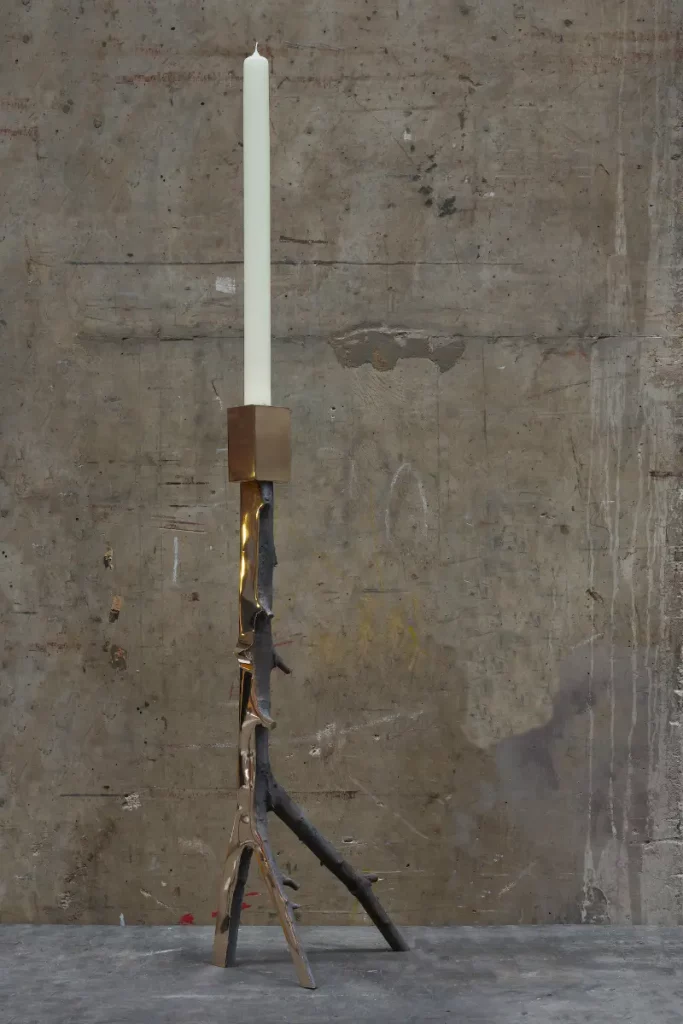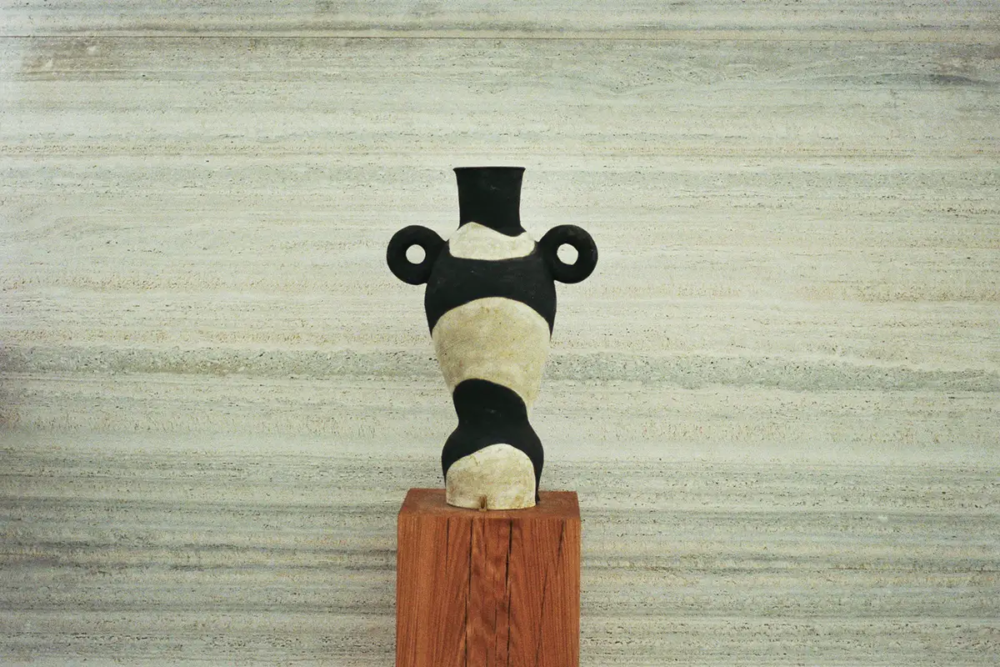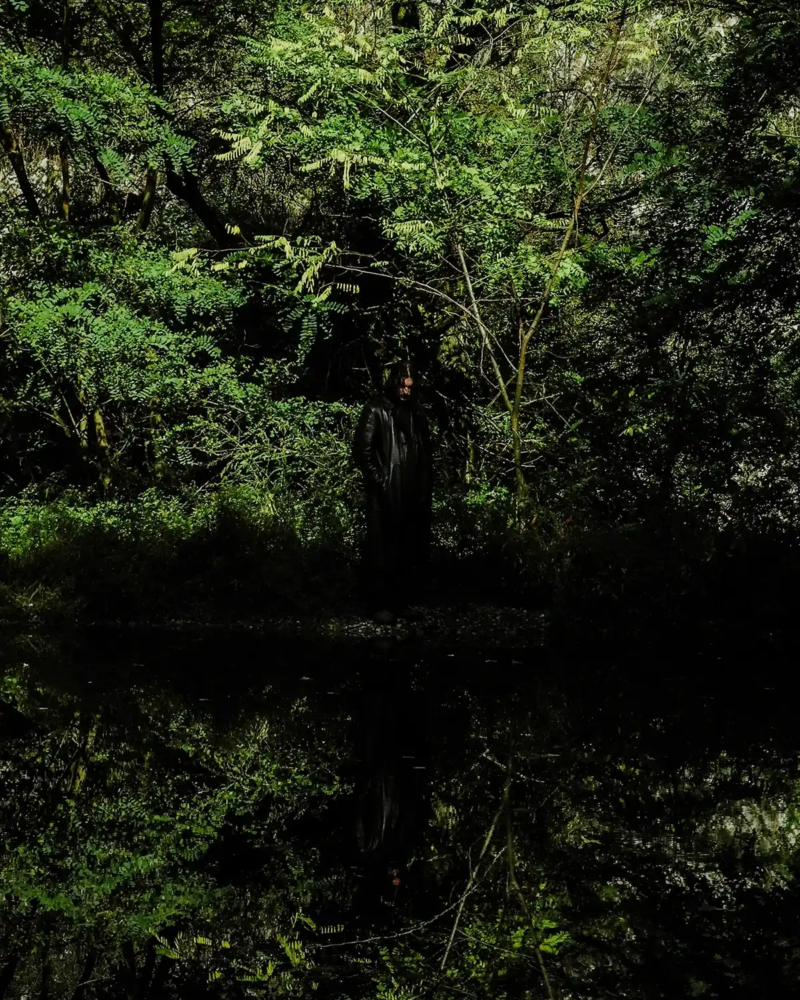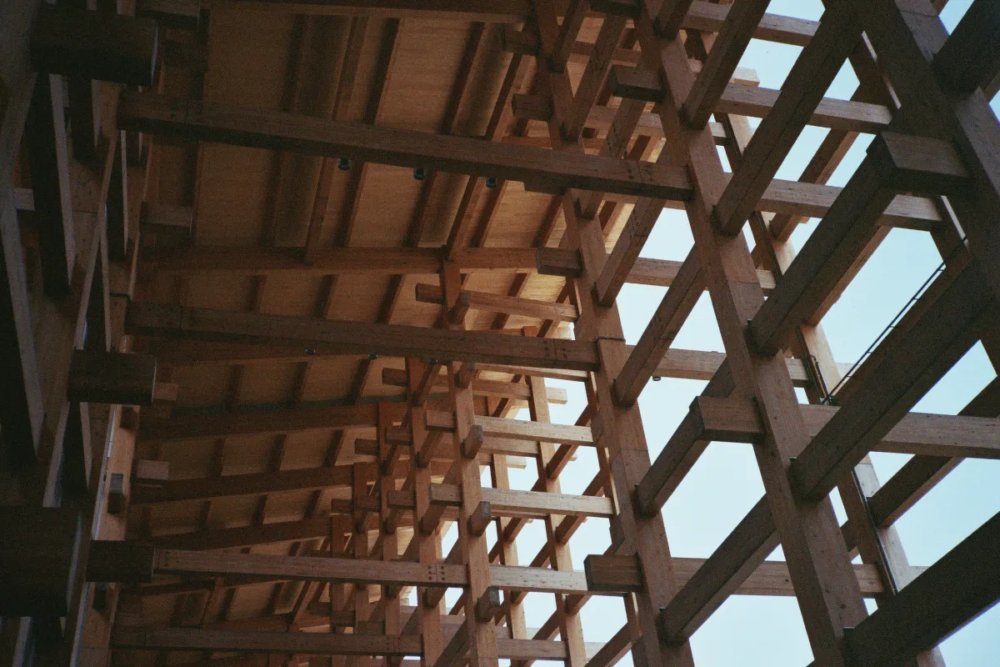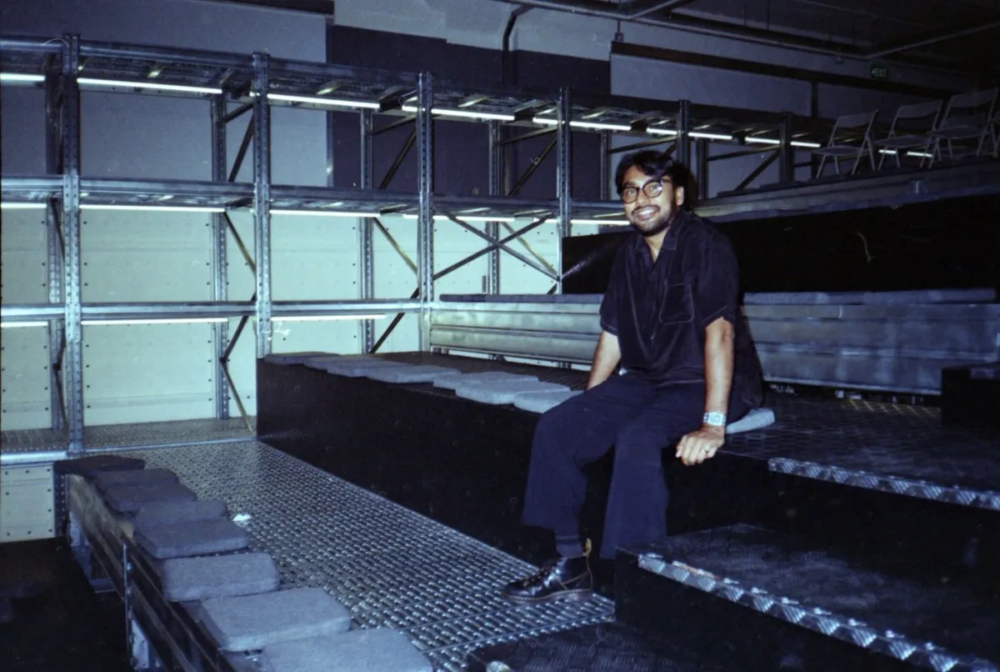
Kiki van Eijk: the primitive roots of rough design
Dutch designer Kiki van Eijk seeks a stable balance between human-made and nature through a sustainable approach which relies on the properties of raw materials and the expertise of craftsmen
Nature is the starting point for Kiki van Eijk’s rough design practice
Kiki van Eijk’s rough design practice is a celebration of nature and simple things which often go unnoticed. Born and raised in the Netherland’s countryside, she developed a sense of wonder and respect towards the manifestations of nature, which inspire the organic shapes of her objects, her wide color palette, and the combination of different materials which create contrasts of textures and surfaces.
«The relationship between human beings and the environment is central in my work as we face the climate crisis, and everything is getting more and more digital. We have to make sure that we stay connected to nature and we understand its laws», van Eijk says about her fascination for the natural world.
When design is rough. Kiki van Eijk’s Civilized Primitives collection: a study on survival methods
Just over ten years ago, van Eijk became a mother for the first time and for about a year she did not feel the urge to design or create anything. Bringing a new life into the world had in fact proven to be a galvanizing and all-encompassing experience: «Motherhood was for me the most primitive act I could imagine, in a very beautiful sense. It gets you really close to yourself and to nature, in fact this is where all the primary and primitive forces take place».
Inspiration returned when she started researching survival methods, which laid the foundation for Civilized Primitives. The collection is in fact based on the assumption that design and creativity often rely on improvisation and intuition and in extreme situations, people can find ingenious solutions for the future using makeshift tools and raw materials.
Civilized Primitives: a return to the dawns of civilization through natural raw materials
During her walks in the forest and fields surrounding her farmhouse in Eindhoven, van Eijk started to collect fallen branches of various sizes and shapes which could easily connect to each other. Once she had collected enough wood, she brought it to her workshop and with the aid of her assistants she began to refine it using craft manufacturing techniques.
«We decided to keep most sides rough, except for one which we covered in cast bronze. I find it intriguing that in Dutch the word civilization is translated into “beschaving”, which literally means “refining/smoothening”. This is the origin of the name: primitive as we find them in nature, but as humans we are inclined to shape things. I researched that the first thing humans designed thousands of years ago is probably the cup; before that, they used to put their hands together to form a bowl, and then they designed the cup following that precise shape. It is inherent in our nature».
Civilized Primitives: a harmonious contrast between polish surfaced and natural textures
Focusing on the concepts of essence and origin, van Eijk availed of raw materials to recreate the basic forms man has created at the dawns of civilization: the circle, square, and triangle. The seemingly precarious design, inspired by primitive survival methods and primordial architectural elements, speaks of a time when humanity and nature were one. A precarious balance which today is put to the test by our reckless actions.
The Civilized Primitives collection, including an A-frame daybed, desk, candleholder, mirror, clock, desk light, curved lamp, and table lamp, has been exhibited in several venues in the Netherlands and abroad through Belgian gallery Spazio Nobile. «A lot of clients and visitors reacted in a sort of primitive way – she explains – They first thought it was all real bark, and only when they looked more closely, they discovered the polish side and the contrast with the rough surfaces. Certain points the bronze patina even enhances the coarse texture of the bark of the tree».
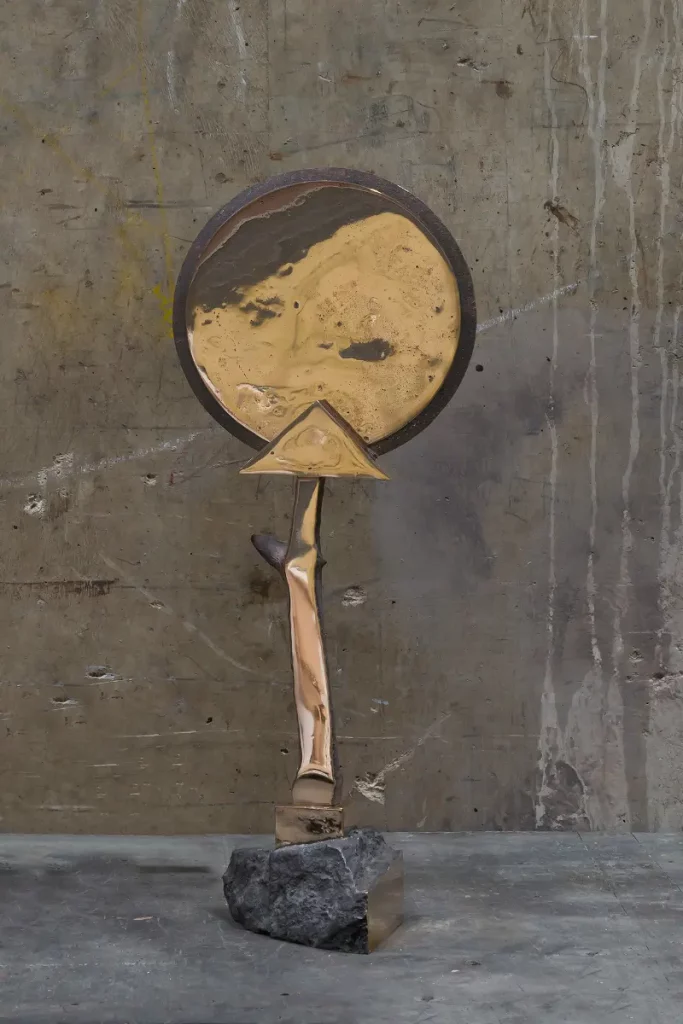
The tactile intelligence of Kiki van Eijk and the rough design
Van Eijk’s fascination for materials comes from that irrepressible desire to touch and explore typical of children, extremely sensitive to tactility, materials, and smell. Through her design practice and careful choice of materials, she wants to evoke that tactile reaction and connection with the surrounding world. In Ceramic outdoor story totem (2022), for instance, van Eijk investigated the limits of the material through innovative craft techniques of stoneware ceramics.
«Tactility is a special kind of intelligence which we have to keep alive as we keep going digital. Scientists have proven that children who only look at screens tend to lose the sense of touch and connection to people, but also to materials; how to perceive materials in order to understand how to take care of our planet», she explains.
Rough design: the fragile balance between physical and digital realms
When it comes to technology, she is scrupulous and tries not to be charmed by the promises and prospects of new digital tools. In projects where she makes use of technology, van Eijk seeks the right balance between the physical and digital realms, as demonstrated in Physical Interaction (2016). It is a series of three sculptures in which she fused craft manufacturing with high tech as she took movement into account when deciding how to illuminate the lamps through an interactive switch.
«I see technology as a tool and I sometimes use it in my work, but it never feels technical as tactility keeps playing a pivotal role. As in Civilized Primitives, I achieve a good balance in order to really benefit from it. But if we are not careful, we risk losing the things which make us human: feelings, emotions, the connection between one another», she claims.
The role of craft manufacturing in Kiki van Eijk’s rough design practice
Van Eijk’s workshop is a bright and spacious former warehouse, now equipped with modern wood and metal working machines. She likes to work with her hands, assembling, modeling, and weaving different materials, supported by her small work team. But she knows that in some cases, to respect the materials and enhance their properties, she has to rely on trusted crafters specialized in elaborate processes
«In my workshop we experiment a lot, we discuss, and we learn from each other. Of course, there are things I cannot do myself, and for those I trust a few crafters who I have known for a long time now. But I never delegate the whole production, I rather collaborate with them through experimentations and communication to find the best solutions. We value and respect the expertise and capabilities of each other».
The playful world of Kiki van Eijk between family, children, and colors
Design and creativity are all around her all the time. Van Eijk shares her life and workshop with her partner Joost van Bleiswijk, whom she met at the Design Academy of Eindhoven. Van Bleiswijk is also the father of her two children, an endless source of inspiration for her work: «My elder kid is ten, while the younger is seven, so he still lives in his own fantasy world. The whole world is a playground for them, they see opportunities to play everywhere».
Van Eijk tries to keep the child within her alive through a whimsical approach which combines different languages, materials, and vibrant colors: «Color is something which helps me convey my messages through objects. I had a thorough color study at the Academy, and I feel very grateful for that, because today with my theoretical and practical background I can intuitively create any color with paint. First, I decide the message I want to communicate, and then I start the experimentation and practical testing phase».
Kiki&Joost launch a new hybrid space devoted to the rough design community in Eindhoven
In the summer of 2024, van Eijk and van Bleiswijk – also known as Kiki&Joost – will inaugurate a hybrid 200 sq m exhibition space open to external collaborations, such as pop-up events, design talks, and showcases. Built in Douglas wood according to ethical and sustainable principles, and equipped with a garden for the summer, it will embody the values and creative identity of its founders.
«It is designed to exhibit our pieces, but we do not want to define everything yet with a yearly program, we prefer to remain intuitive and open. It is a place for new opportunities which we want to share with our community. For us it is a dream come true».
Kiki van Eijk’s biography and rough design
Kiki van Eijk was born in 1978 in Tegelen, the Netherlands, and she graduated Cum Laude from the Design Academy Eindhoven in 2000. Inspired by a childlike sense of wonder and the natural realm, Kiki’s world is whimsical and colorful, lyrical and personal, yet refined by a rigorous attention and skillful craftsmanship. Her collections have been presented in galleries and museums worldwide, in London, Paris, New York, Milan, Tokyo, Montreal, Amsterdam, Brussels, and Moscow, among others. Her collaborations include brands such as Hermès, Google, Saint-Louis, Cor Unum, Bisazza, Häagen-Dazs, Serax, Bernhardt Design, and Nodus.

